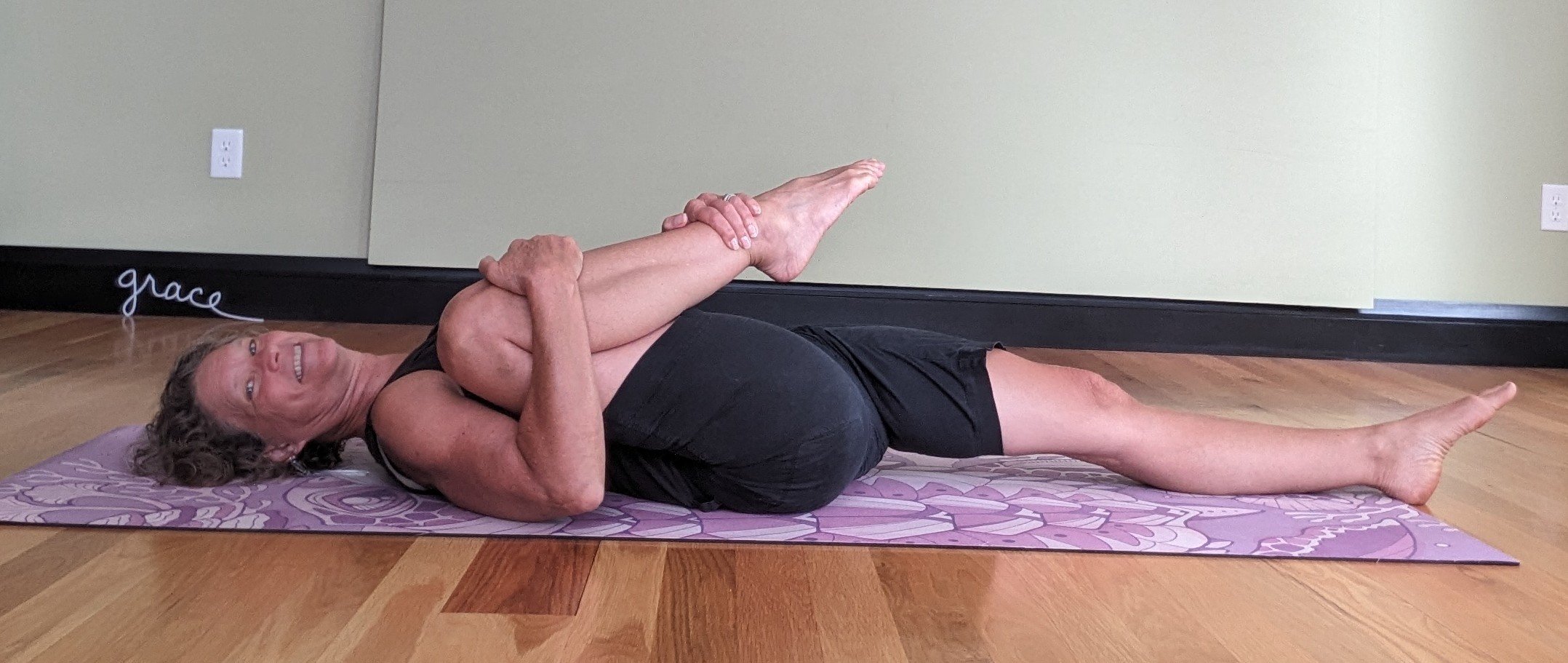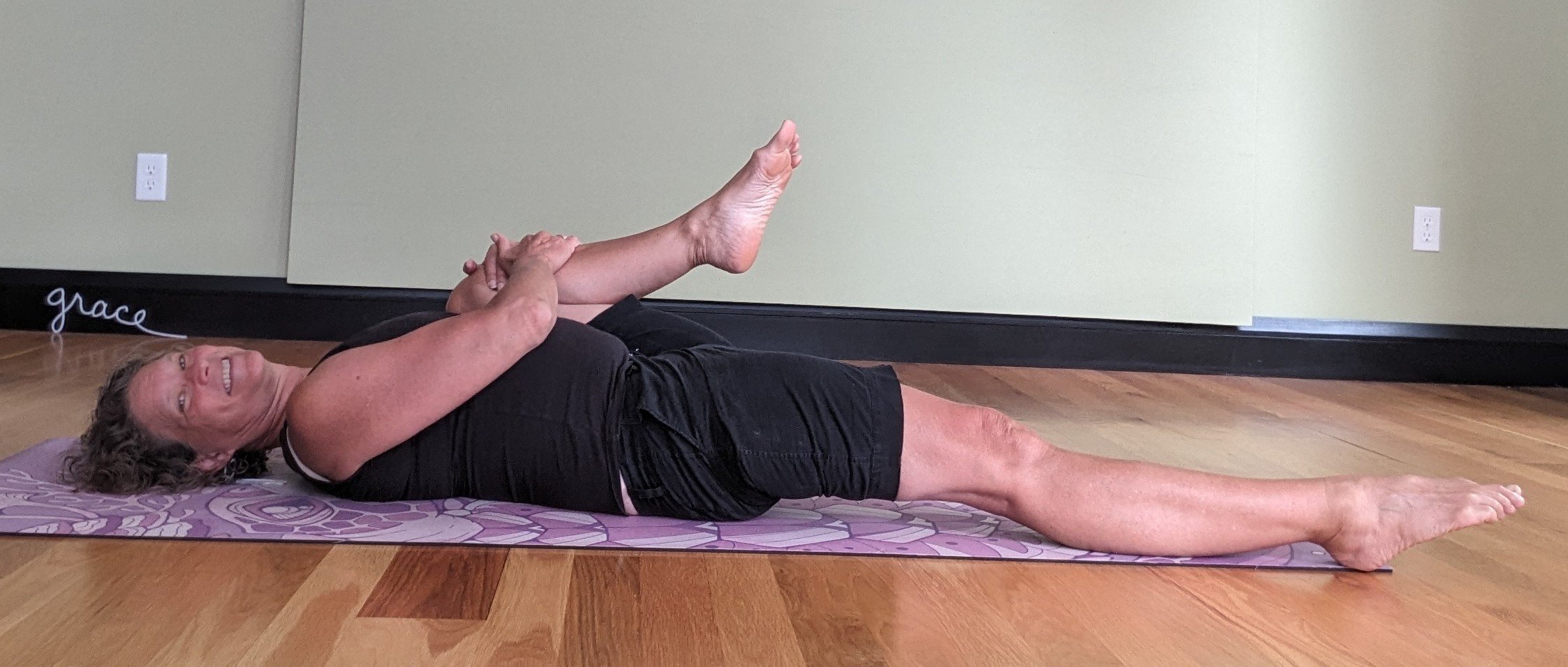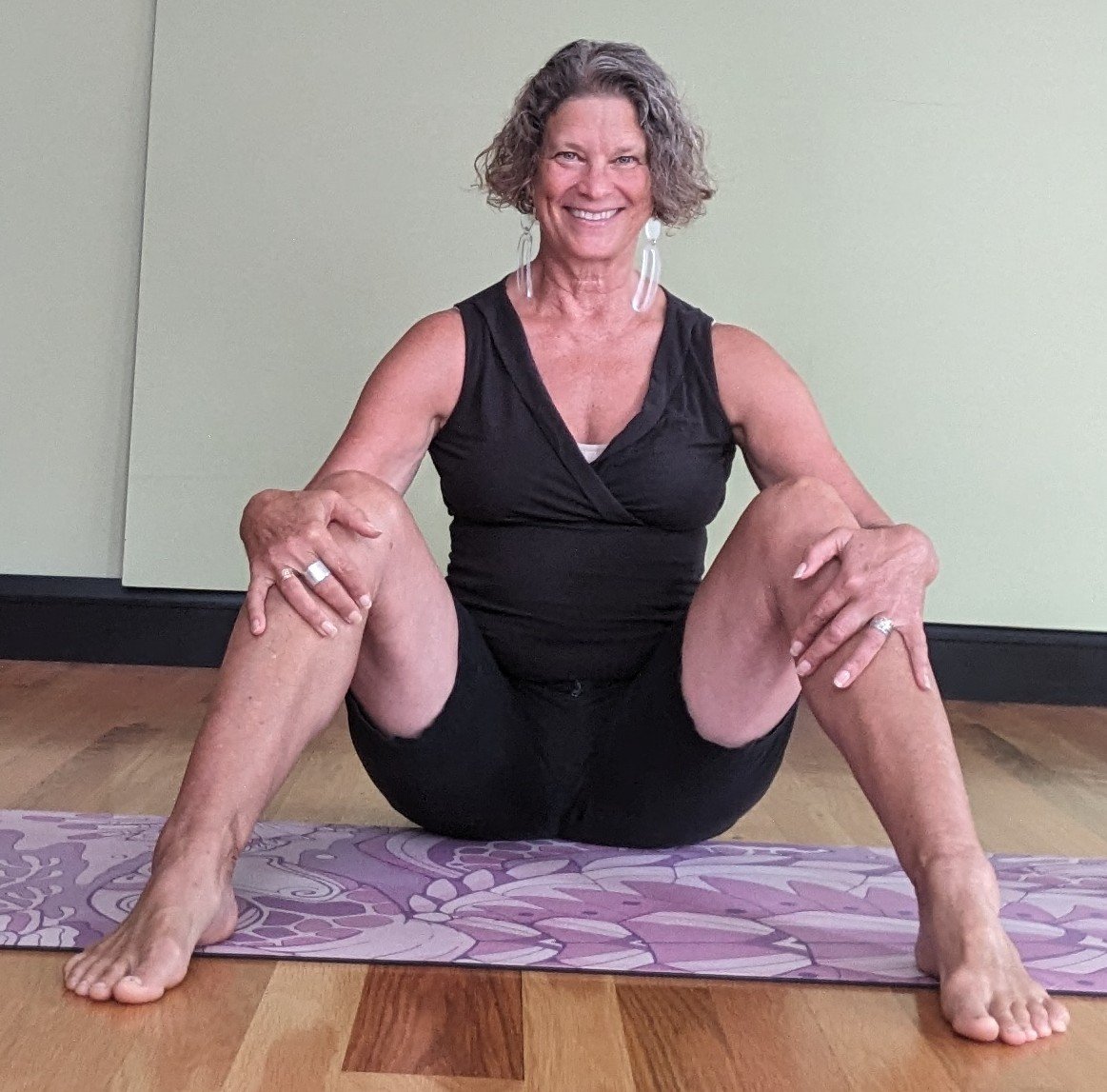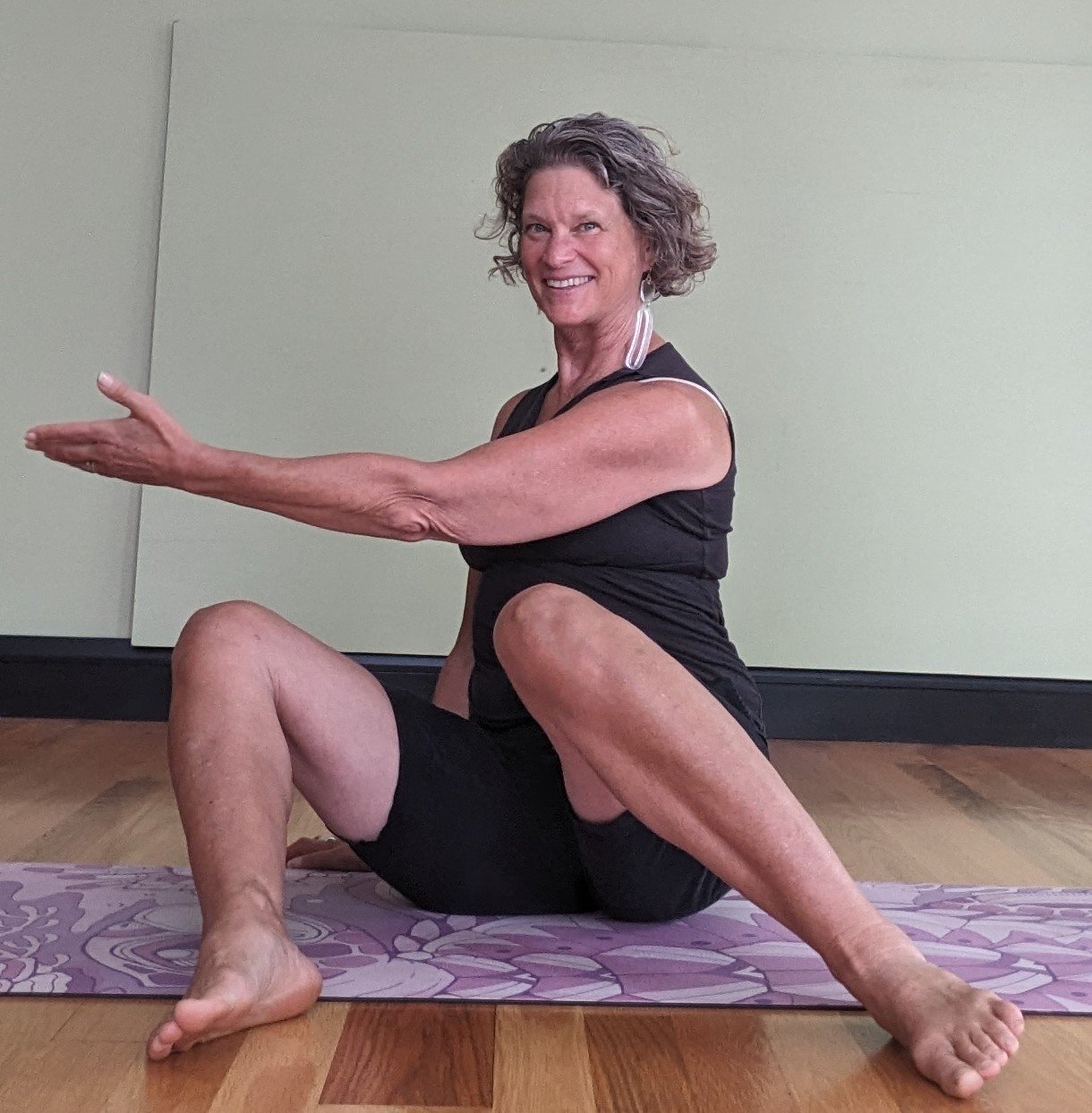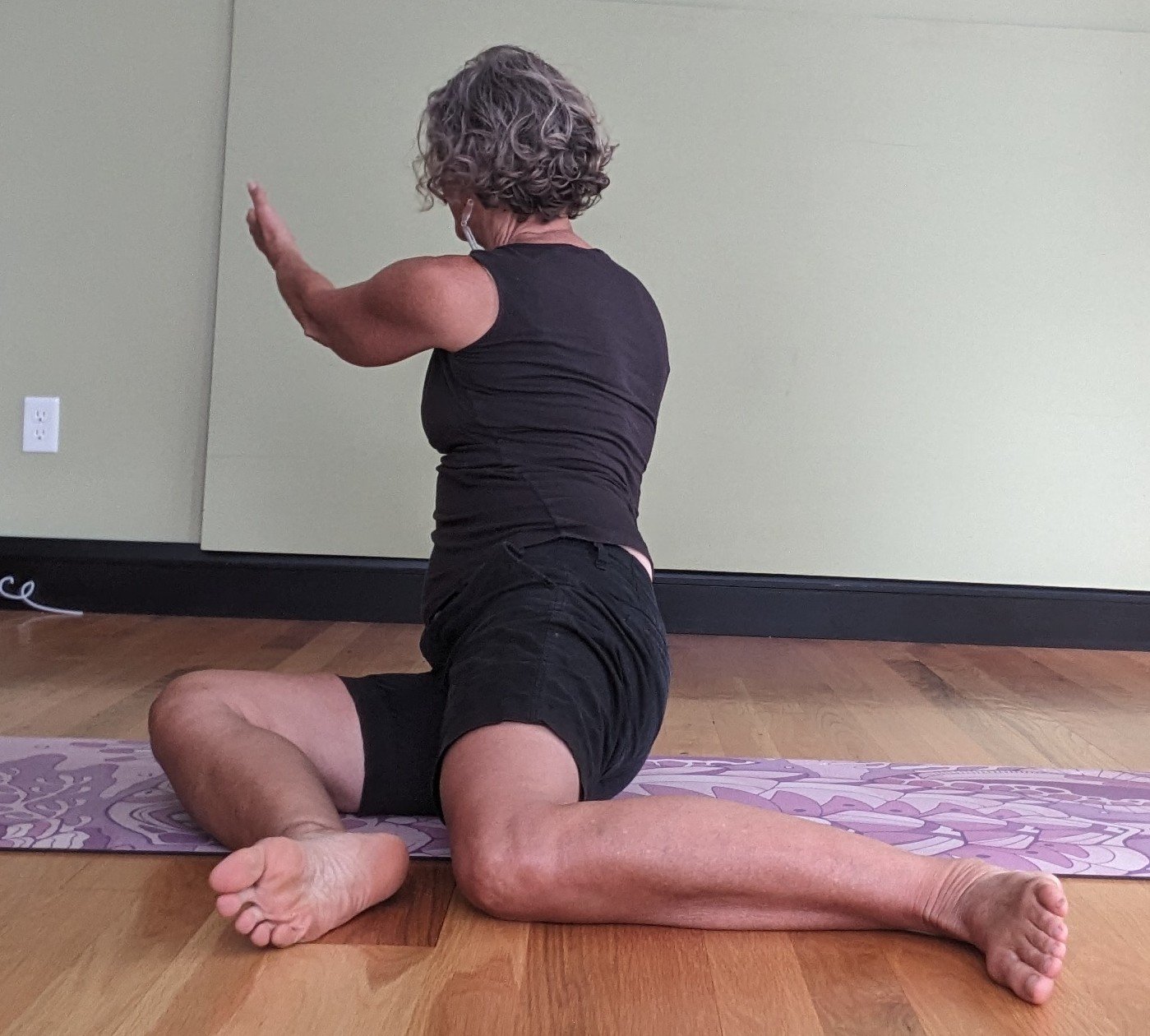This is Part 3* of the 7-Part Gentle Rewilding series!
We’ve been tamed, y’all. Modern life molds and changes our bodies, minds and spirits. Much of our modern domestication is just fine: I’m glad we use forks and don’t spit inside and don’t drink milk straight out of the carton (oh wait, I do that). But some of our taming is worth questioning and unwinding. This series is an exploration of ways of reconnecting to our human design with gentle rewilding.
* Find Part 1 – Gentle Rewilding & Feet here.
* Find Part 2 – Gentle Rewilding: Hands here.
Strand of Strength & Mobility
Your spine is a wonder of design. We might think of it as a single structure but actually, it is a dynamic strand of bones and joints that allow a wide range of movement from lifting heavy objects, to twisting, reaching and looking in nearly 360 degrees.
Most people are born with 33 vertebrae which by adulthood shifts to 24 since some at the bottom fuse together during normal growth and development. Anatomically, the spine is divided into five sections: the cervical spine at your neck is made up of 7 vertebrae, the thoracic spine’s 12 vertebrae are those at the rib cage that support and protect your heart and lungs, the lumbar spine’s 5 vertebrae are the largest and are designed for strength and stability, the sacral vertebrae are 5 fused bones at the back of your pelvis and the four fused bones of the coccyx region form your tailbone.
Back & Neck Pain
That’s a lot of parts and pieces that need to work together to keep you moving and supported! Like most things, we tend not to think about any of them until they hurt – which happens a good bit with the spine. Around 80% (80%!!) of Americans will have low back pain at some point in their life and about a third of adults will have neck pain in any given year.
What’s interesting is that in the majority of low back and neck pain cases, doctors don’t know exactly what the cause is. While some pain might be the result of injury or conditions like arthritis or spinal stenosis, much of the time there is no structural issue* that doctors can find. Symptoms often simply improve with time, OTC anti-inflammatories and gentle movement.
So what’s going on with all the back pain? As I’ve written about before, pain is a slippery devil. I’m neither an expert nor have I experienced chronic or debilitating pain but I know for myself that fear, previous pain and emotional stress can all exacerbate perceived levels of pain.
There are many back pain relief approaches. Some people swear by the work of Dr. John Sarno around the mind-body connection of pain. I know people who have done well with the Dynamic Neural Retraining System (DNRS). Some find relief with acupuncture, massage and other non-invasive techniques.
It’s worth considering that part of the trend of chronic back pain in our culture may be aggravated by chronic sitting and overall lack of spinal movement in our culture. In 23 years of guiding moving bodies, I often see people holding their spine rigidly — like a toothpick with a marshmallow on top! Sometimes, I invite new students to simply focus on moving their spine and everything else will follow.
Gentle Rewilding the Spine: 6 Kinds of Spine Love
The spine is involved in every movement we do. Part of gentle rewilding is to experiment with different movements to see what feels nourishing to your body right now. Here are 6 of my favorite doses of spine love to experiment with — as always being with your Right Now Today Body!
Spine 6 Different Ways
Your spine is meant to move 6 ways: front and back, side to side and around in both directions. Here is a 5-minute Movement Snack video demonstrating gentle ways of incorporating these 6 movements into your day. (Please note that if you have a diagnosis of osteopenia or osteoporosis, you might consider limiting the forward movement of the spine which can compromise the integrity of the softer bone tissue at the front of the spine. As always, check with your health care team.)
Spine lengthener
Put your hands on something stable like a counter or table (which allow you to pull more than the chair I’m using here), step back and fold at the hips to about 90 degrees. Look straight down at the floor (not like I’m doing looking at you!) and reach your tailbone long behind you. Micro movements in the hips and shoulders might release some tightness or stiffness. Straightening your legs offers a hamstring stretch. Breathe a lot and hold as long as it feels good (I usually do it for about 30 seconds)
Use something stable! Look at the floor! I’m being a goof for the camera!
Low Back Love 3 ways
Low back hurting? These 3 are my favorite moves for loving on it!
1 ~ On your back on the floor (you can do this on a bed or couch but won’t get the same massaging benefits from being on a hard surface), pull one knee into your chest outside your rib cage while the other leg reaches long on the floor. Micro movements can release tightness in the hip joint. Do both sides.
2 ~ Draw both knees into your chest, hug around them and rock gently side to side.
Hug knees in gently. Rock gently side side. Right on.
3 ~ Place both hands on your knees and using the strength of your hands and arms, draw circles with your knees giving your sacrum a massage on the floor. Go in both directions. Delicious.
Use your hands to circle your knees. Let the floor massage your sacrum. Yum.
Swirling Mermaid
Give a gentle twist to your whole spine by starting seated with both feet flat on the floor, let your knees drop to the right and follow your knees with your left hand and your eyes as far as feels good. Do both sides a few times.
move Everything Else for Stiff Neck
When your neck is hurting, one way of releasing the tension is to keep your head steady in standing and swinging your arms. Eyes stay ahead and let your arms move and notice any impact on the sensation in your neck.
Keep your head steady and move everything else!
Ironing the Neck
This is a move I like to do when I’ve been at my computer or driving a lot. I may not feel tension in my neck but it’s often there. First, without forcing, look over your right shoulder and see how far your eyes can “reach” by letting them land on an object. Then, tip your right ear gently to your right shoulder. If that feels good, use your right hand on your left upper chest / collarbone to give a gentle stretch. If that still feels good, take the knuckles of your left hand to “iron” your neck from ear to collarbone. Go slowly and take care of the skin and muscles of your neck. (A little skin oil - I love Trader Joe’s jojoba oil - or lotion might be helpful here.) Then try looking over your right shoulder again and see if your eyes can “reach” further than before! Of course, do both sides.
The neck has not just many bones but many muscles. Use your hands and knuckles to make more space and ease. Yes, please.
Your spine is at the core of your body, but it’s not stiff and fiberous like an apple core. It’s both strong and mobile, protective and adaptive, alive and flowing with energy and movement. Rewild your spine by letting it explore all the ways it can go!
* A herniated disk or other abnormalities or degeneration in the spine does not necessarily mean the person will experience pain. “[In asymptomatic individuals,] disk degeneration increased from 37% of 20-year-old individuals to 96% of 80-year-old individuals. Disk bulge prevalence increased from 30% of those 20 years of age to 84% of those 80 years of age. Disk protrusion prevalence increased from 29% of those 20 years of age to 43% of those 80 years of age.” Source: https://pubmed.ncbi.nlm.nih.gov/25430861/




